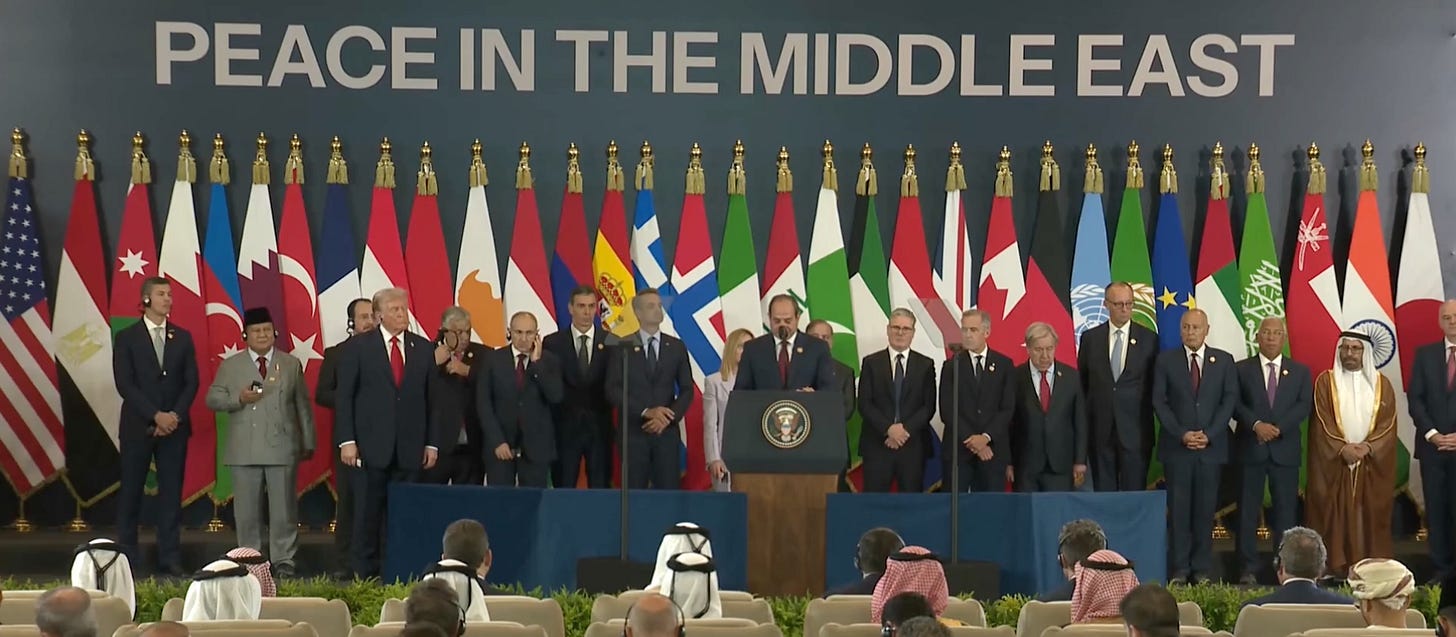Trump’s “New Middle East” Is a Utopian Fantasy
And there’s some chance it could work

“This is the historic dawn of a new Middle East,” President Trump declared to Israel’s parliament today. He spoke of “peace for all eternity,” of a “golden age of the Middle East,” characterized by “hope, harmony, opportunity, and happiness.”
If the “new Middle East” phrase sounds familiar, it should: it was the title of a 1993 book by Shimon Peres, “The New Middle East.” As the jacket copy put it, it offered a vision of “a reconstructed Middle East, free of the conflicts that plagued it in the past, set to take its place in a new era.”
Since that book was published, world events—the 1996 Khobar Towers bombing, the 1998 attacks on the U.S. embassies in Kenya and Tanzania, the October 2000 attack on the USS Cole, the September 11, 2001 attack on the World Trade Center and the Pentagon, the October 7, 2023 attack on Israel, the wars in Iraq and Afghanistan, ISIS beheadings, countless missile attacks and suicide bombings against Israel, the wars in Syria and Yemen—made bloody clear that the old Middle East was not going to surrender so easily.
Many of the factors that torpedoed the 1993 dream of a new Middle East threaten to sink this one, too. Religious conflicts between Sunni and Shiite Islam, and between factions of Sunni Islam, fuel violence. So do newer ideologies—Khomeneism, Baathism, Arab nationalism—and family and tribal feuds. People have been fighting each other for reasons that have nothing to do with Israel—Barzani Kurds against Talabani Kurds in Northern Iraq, Sunnis against Druze in Syria, Turks against Kurds. The conditions that typically contribute to peace—freedom, democracy, rule of law, robust and well-functioning civil-society institutions—are scarce-to-nonexistent everywhere in the region except for Israel. The dominant governance model remains dictatorships, dependent for their survival on nursing or provoking external conflicts that distract their people from their own misery.
At the moment, Hamas, far from being entirely obliterated in the “total victory” that was Benjamin Netanyahu’s baseball-hat slogan, is reportedly consolidating power in Gaza by murdering its rivals.
Because it’s Hamas, not Israel, that is now directly killing Palestinians, the campus protesters and their friends in the press do not care. It suggests that what the campus protesters and their friends in the press really care about is not Palestinians but demonizing Israel and the Jews. As the Israeli opposition leader, Yair Lapid, put it in his own Knesset speech yesterday with Trump looking on, the Columbia protesters “were deceived”—”there was no genocide, no intentional starvation.”
Trump flew from Israel to an Israel-free “Peace in the Middle East” summit in Egypt, with a row of discredited and corrupt dictators, including Palestine Liberation organization leader Mahmoud Abbas. Netanyahu was not present, there was no Israeli flag on display, and some of those in attendance openly fantasized about removing from Israel the nuclear weapons that have helped to make it the regional superpower. (Netanyahu explained his absence from the Egypt meeting by attributing it to the impending Jewish holiday of Simchat Torah).
So what’s the reason for hope?
Keep reading with a 7-day free trial
Subscribe to The Editors to keep reading this post and get 7 days of free access to the full post archives.


